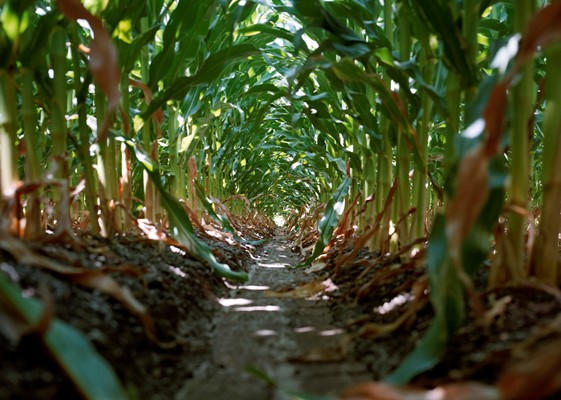Although planting might seem as if it were ages ago, its effects can show up now. While scouting corn in addition to checking ear size and kernel count, take a look at stand, roots and stalks, and re-examine your ears to determine what when right—or wrong—earlier this year.
“Loss of 1,000 plants per acre is a 5- to 7-bu. loss,” says Brad Beutke of CropTech and presenter at the 2016 Farm Journal Corn College in Albert Lea, Minn. Examine where grain loss came from to limit financial losses next year.
Stand
Uniform stand establishment is a critical building block to high yields. When plants get behind or your planter leaves skips, doubles or misplaced seed in the field, yield is lost nearly immediately.

What to Scout in Corn Now.
It’s typically pretty easy to tell when a plant gets behind. Look for skinny stalks and small or underdeveloped ears. Since it fell behind early, it essentially became a weed and had to fight with its neighbors for sunlight, water and nutrients. Big plants usually win that fight, which means plants with delayed emergence don’t pay out.
One of the easiest ways to have uneven emergence is uneven planting depth. When a plant is deeper or shallower than surrounding plants, it’ll likely be delayed because it has to work harder to break through the surface. Alternately, the seed is so close to the surface it can’t take absorb water to germinate.
Uneven planting depth isn’t the only hazard of planting. Skips, doubles and misplaced seed can decimate yields, too. You can identify whether a true skip, a double or a misplaced seed has occurred by heeding several rules of thumb:
– Skips can be identified by a missing plant with even plant spacing on either side.
– Doubles show two plants close together with even plant spacing on either side.
– Misplaced seed results in uneven spacing, often a result of a delayed seed drop.
“We see a lot less doubles than we used to because of metering technology,” says Farm Journal Associate Field Agronomist Missy Bauer. “In a double, one won’t produce a harvestable ear.”
You’re more likely to see misplaced seed than a double or skip. “Planting speed is a big culprit of misplaced seed,” Bauer adds. “Losses from planter speed show up in ear size.”
If you’re going too fast, seeds can bounce or get caught up in seed tubes, delaying seed drop. That drops a seed where it doesn’t belong, misplacing seed and throwing off your picket-fence stand.
Roots
Since planting depth can play a large role in stand development, it’s essential to evaluate your roots. You can measure planting depth even at this point in the growing season.
“Planting problems show up at harvest,” Beutke says.
After digging up a root mass, trim brace and crown roots and clear the plant of excess soil. Search through clean roots for the seed root at the base of the crown. Measure the root from where the seed was located to the base of the plant. Add ¾” to find seeding depth.
Stalk
This late into the year, the plant has used a considerable amount of nitrogen. If it’s not getting what it needs from the soil to fill the ear, it will start stealing from the stalk.
“Look for cannibalization,” Beutke says. “Right now, you don’t want the first two to two and a half nodes to have a cottony pith.”
The cottony pith means it’s weak and more susceptible to breakage, which makes for a slow harvest. If you find cannibalization this late into the season, there’s not much you can do. Make a plan for harvest, and consider prioritizing fields where you find cannibalization. Next year, reevaluate your nitrogen program to see if applying more fertilizer when the plant needs it might reduce stalk cannibalization.
Ears
Count out 1/1,000 of an acre. In 30” rows, this equates to a distance of 17’5”. Compare the total number of plants with the total number of harvestable ears. If you have 30,000 plants but only 28,000 ears per acre, you’re losing bushels. Examine the plant to see if it is a late emerger, has a nitrogen deficiency, is experiencing a spacing error or facing other issues that caused loss.
It’s never good to discover yield loss, but checking ahead of time can help you set expectations and plan harvest order.
Article Via Sonja Begemann, Farm Journal

